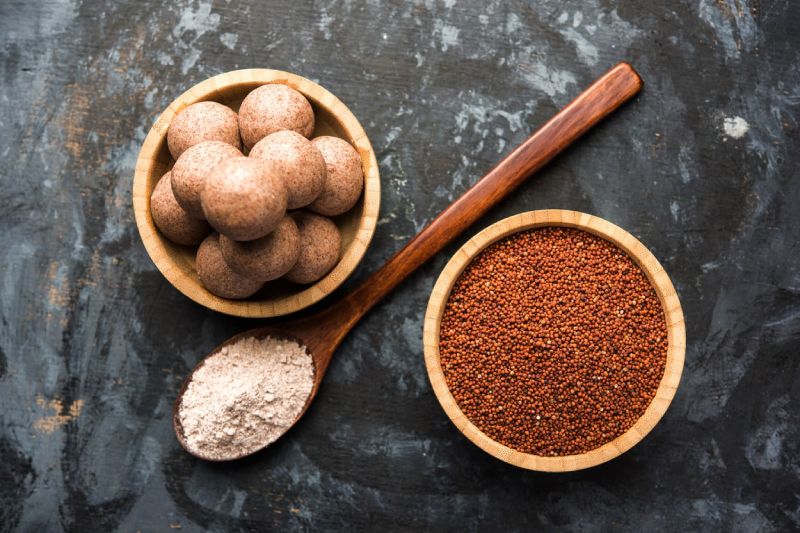Eating Ragi for Breakfast can Help with Weight Loss and Other Health Benefits

Fuel Your Breakfast with Nutrition
Breakfast is considered to be the most significant meal of the day! Additionally, people who are concerned about their health are integrating a range of grains that are high in fiber into their breakfast selections due to the growing interest in healthy living and eating. These nutrient-dense grains provide a wealth of important nutrients in addition to being critical sources of energy.
Grain has been a staple of most diets worldwide for at least 10,000 years. Grain is a basic food essential for people all across the world, whether it is maize in Mexico, rice in Asia, or wheat in the East. They also continue to be an essential component of the Indian traditional diet for millennia, providing an abundance of essential nutrients and an essential source of energy.
In the southern region of India, one such grain that is typically eaten for breakfast is ragi, also known as finger millet. Ragi’s tiny red grains are rich in minerals, fiber, and protein and have a powerful punch. Ragi is devoid of gluten and a good source of unsaturated fats that can lower cholesterol, lower the risk of heart disease, and enhance heart health in general.
Ragi: An Incredibly Nutritious Food
Ragi’s nutritional superiority has allowed it to rise from relative obscurity to prominence in the health food industry. Packed with vital minerals, such as antioxidants, iron, calcium, B-complex vitamins, vitamin C, and vitamin E, this gluten-free grain has become a favorite among health enthusiasts and nutritionists worldwide. State governments have been asked to promote the production and promotion of coarse grains, especially bajra and ragi, at all levels due to their numerous health benefits. This program includes expanded production—Karnataka and Odisha are two examples of this—as well as inclusion into school lunches with the goal of improving both mental and physical health. Jharkhand, Chhattisgarh, Delhi, and the southern states have all been reported to engage in similar tactics.
A Superfood with a Nutrient- Rich Profile
What distinguishes ragi from other millet varieties? Alternatively, even among superfoods? One reason for this is its remarkable nutritional profile! It is noteworthy from a nutritional point of view because it is generally accepted to contain high amounts of dietary fiber (18%), calcium (0.38%), and phenolic compounds (0.3–3%). It has a number of health advantages, some of which are linked to the amounts of dietary fiber and polyphenols it contains.
Strengthening Properties of Bones
“The unmatched calcium content in ragi is noteworthy as the mineral is crucial for maintaining bone health, preventing osteoporosis, and supporting muscle function,” says Nadiya Merchant, associate director of nutrition. such as antibacterial, antioxidant, and anti-diabetic qualities.”
Overcomes Iron Shortage
Additionally, ragi is a useful remedy for iron deficiency, a global nutritional issue that is especially problematic for mothers and children. Research has indicated that supplementing with ragi porridge has a favorable effect on teenage females’ hemoglobin levels. Apart from its mineral composition, ragi’s high dietary fiber content aids in promoting digestive health.
Ragi’s Ability to Help People Lose Weight
Ragi is a fantastic food for weight loss and diabetes management. Its high fiber content makes you feel fuller for longer and helps you eat fewer calories overall. The complex carbohydrates in ragi have a low glycemic index, which helps with better control over calories.
In addition to being a source of protein, ragi contains all nine of the necessary amino acids that the human body needs in a well balanced profile. Because of this, it’s a valuable source of protein, especially for vegans and vegetarians who might find it difficult to get enough protein from plant-based sources alone. Protein is essential for maintaining general health, helping with weight loss, muscle building, and repair.
Provides a Variety of Breakfast Options
In addition to its nutritional advantages, ragi lends itself to a variety of culinary creations due to its versatility in the kitchen. The options are numerous, ranging from classic South Indian fare like ragi mudde (steamed ragi balls), dosa, and idli to contemporary takes like ragi smoothies and baked goodies.
Chefs and home cooks alike love ragi because of its mild, nutty flavor, which goes well with both sweet and savory dishes. They can be added to convenient morning cereals that are quick and simple to produce, nutritional, high in vitamins, low in fat and cholesterol, and made into a variety of goods like rotis, flakes, and porridge. Because ragi porridge is highly nutritious and easily digested, parents are still urged to serve it to their newborns and early children for breakfast.
Along with providing nutrition, new-age foods like ragi pancakes are also delivering diversity in terms of textures and flavors, surpassing the nutritional value of conventional cuisines.